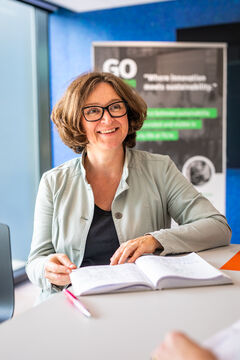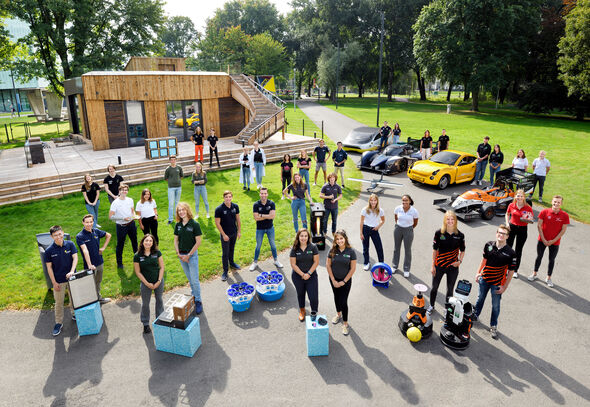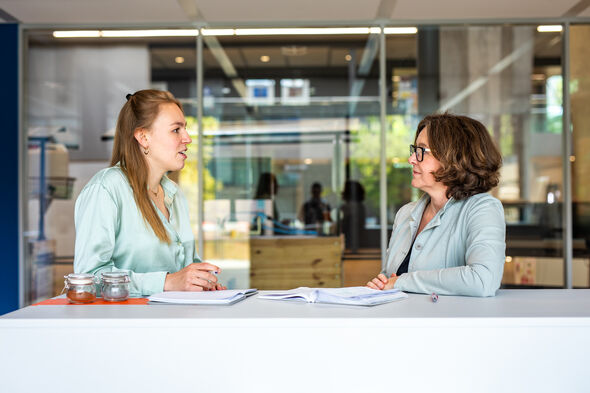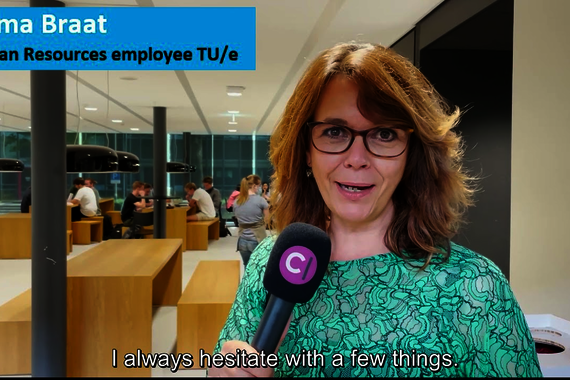
Sustainability: fulfilling the good intentions
TU/e appoints Sustainability Ambassador
Going to conferences by train instead of flying, using 'tulips' to separate waste, installing smart lighting in Atlas; various experiments are underway at TU/e to help us achieve a sustainable campus. An ideal location where students and researchers come up with ideas for the future-proof university. To coordinate all the initiatives, TU/e has appointed a Sustainability Ambassador. Anna Wieczorek, Associate Professor at the Department of Industrial Engineering & Innovation Sciences, is perfect for this role.
Problems like climate change cannot be solved by simply changing how we manufacture goods, as Anna Wieczorek, founding member of the worldwide Sustainability Transitions Research Network, now knows. The topic of her research at IE&IS is the transition to sustainability. “We also have to come up with new ways that impacts the consumption of power, water and raw materials. In this endeavor, every person, company or institution has a role to play. What choices are we making?”
During her lectures on Managing Sustainable Technologies she tells the second-year students that they will become the people who, on behalf of companies or government, will be making the decisions. And that these will have consequences. “It is an elective where I often see students from Electrical Engineering and other departments. I ask them why they have chosen this course and unfailingly the answer is that they miss the presence of sustainability in their own degree program.”
Dialogue
This approach - asking about motives and listening to the answers - is one Wieczorek is keen to apply in her new role as Sustainability Ambassador. “The Executive Board has asked me to coordinate the transition to a sustainable university. I want to set up an organizational structure around sustainability and enter into dialogue with the TU/e community in order to develop a shared sustainability vision. This must be about what we do on the campus, but it must also be about our education and research.”
Wieczorek disputes the notion that in the academic world a great deal of time is spent telling how a transformation like this should happen while few academics are ready to roll up their sleeves and put the theory into practice. “I am most definitely someone who takes action. I want to make transitions happen by making science work for people. In one of my projects, for example, we have set up an ICT platform for community-based Virtual Power Plants. These are already running in the Netherlands, Ireland and Belgium.”
A sustainable university does more than collect its coffee grounds and put solar panels on its roofs. “It is important that we work bottom-up,” says Wieczorek. “I want to hear how employees and students would like to contribute. Bearing this in mind, I'm pleased with the questions that University Rebellion is asking of the Executive Board. I would like to involve these and other students in the transition. This is where Go Green Office has a very important role to play.”
The interview continues below the photo and the box.
GO Green Office is the contact point for environmentally aware students
Quirine Verbeek is the chair of GO Green Office and a master's student of Innovation Sciences. She is “incredibly pleased” that the Executive Board has now appointed an ambassador who will be writing a vision of sustainability at TU/e, because “back in December this was requested by the Sustainability Network Eindhoven on behalf of the student teams.” Together with Anna Wieczorek, GO Green Office will be looking at how students can give voice to their wishes and experiences related to making TU/e future-proof.
Verbeek explains that GO Green Office is itself in transition, moving from project-based working to working strategically. “We are keen to work towards becoming the student body's central point of contact for sustainability in the years ahead.”
“We are already discussing with Dorine Peters, Director of Real Estate, how to involve students in deciding which choices must be made. And we are looking into whether appointing a sustainability manager at the associations is going to work. In any event, we've already had plenty of close contact with the study associations and we will soon be involving the sports and culture associations too. By bringing the tasks of the Sustainability Network Eindhoven into GO Green Office, we are also keen to get the student teams involved.”
As well as swapping good ideas, GO Green Office will also start up another SUMAP Challenge, in which the associations compete with their sustainability initiatives. Other projects too would benefit from having the spotlight turned on them again. “The Green Room in Atlas is the physical space where exhibitions can be held and it can also be booked by students and employees who want to come together to discuss plans related to sustainability.” In summing up GO Green Office's various activities, Verbeek does not forget a great success: “The festival cups are incredibly popular. We have 6000 hard plastic beakers we can loan out, and we give instructions for using them.”
Separating waste
TU/e has pledged to become a zero-waste university in 2030. As a first step, general waste must be reduced to 30% in 2022, and the ‘Let’s go zero’ campaign has been launched to help us achieve this. One of the campaign's projects involves initiating cooperation throughout the chain because in order to maximize waste prevention, reuse and recycling, the entire chain from design to waste processing must be studied.
“Technology never stands in isolation. The user of the technology determines how it is used,” says Anna Wieczorek. “If waste-processor Renewi has a great system for reusing all the materials that leave the campus, it will only work if people pitch in when they eat lunch and separate their paper and plastic packaging before disposing of it.” Cursor went to see how that is working out in practice. See the video below.





Discussion